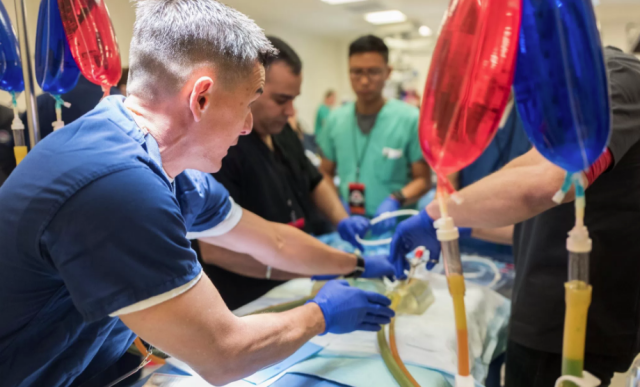
Resuscitative Endovascular Balloon Occlusion of the Aorta (REBOA) is an emergency technique for temporarily blocking the blood flow to the lower body in the event of subdiaphragmatic internal bleeding.
A guidewire and balloon-like device are inserted into the aorta via the femoral artery and, as it inflates, the balloon blocks the aorta, reducing blood flow to the injured sites but maintaining it to vital organs such as the heart and brain. Point-of-care ultrasound (POCUS) can be used to guide and verify the position of the guidewire and balloon during the procedure, and is a preferred alternative to fluoroscopy, which slows down the whole procedure while the patient is transferred to a radiology department.
Time is critical in trauma situations, and there is evidence to suggest that fast and accurate insertion of the guidewire can shorten the time taken from patient admission to REBOA, and may lead to improved outcomes and reduced mortality1.
In April 2017, the University of Aberdeen launched a 2-year clinical trial – called UK-REBOA – into the safety, efficacy and cost-effectiveness of the technique, based on a sample of up to 120 patients from across 10 major trauma centres (MTCs). FUJIFILM Sonosite UK loaned two ultrasound systems – a Sonosite Edge II and a Sonosite M-Turbo with two linear probes – to support a series of three training events across the UK led by UK-REBOA.
Held on the 22nd, 23rd and 24th of January in Birmingham, Coventry, and London respectively, the events were designed to train medical professionals in the REBOA technique at MTCs that will be participating in the trial.
Read more on the UK-REBOA trial.
1 Ogura, T et al. Ultrasound-guided resuscitative endovascular balloon occlusion of the aorta in the resuscitation area, The Journal of Emergency Medicine, 2017, 52(5), 715-722
Check Out Sonosite's Clinical Resources For Emergency Medicine
While everything we do to simplify our ultrasound machines is aimed at optimising the functionality for your use, anatomy recognition and exam techniques remain a critical component for point-of-care users. Check out all our clinical education resources for Emergency Medicine on our Clinical Media Gallery.



